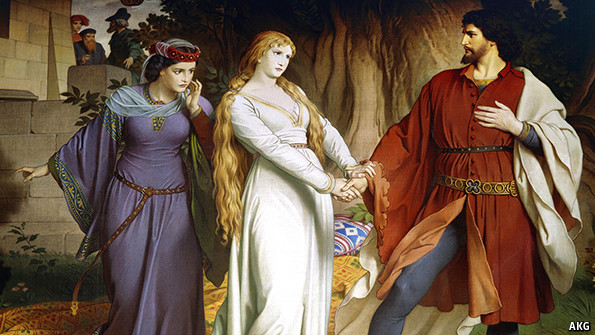
“THE most erotic music ever composed.” This was how one critic described Richard Wagner’s “Tristan and Isolde”, which in 2015 marks the 150th anniversary of its first performance. The work is divisive. Many 19th-century critics thought little of it; some even mocked it. But it had an enormous impact, ushering in the move towards atonality that found its most extreme expression in the work of composers like Arnold Schoenberg. Today it is the most famous opera by Germany’s most famous opera composer. But why all the fuss?The opera traces the story of two lovers, Tristan and Isolde (painted above by August Spiess in 1881), who fall madly in love after drinking a potion. The plot is forgettable; the music is not. The magic starts with the prelude, a ten-minute musical introduction that structures the rest of the piece. The opening chord, known to music buffs as the “Tristan chord”, shocked the 19th-century listeners who heard it first.Normally, in classical music, dissonance resolves into consonance; tension melts into resolution. But the Tristan chord, and the music that follows it, dispenses with such convention. It tempts you to listen out for a particular chord (A...
from The Economist: Books and arts http://www.economist.com/news/books-and-arts/21637349-magic-wagners-opera-springs-musical-trick-spine-tingling-and-blissful?fsrc=rss%7Cbar
No comments:
Post a Comment